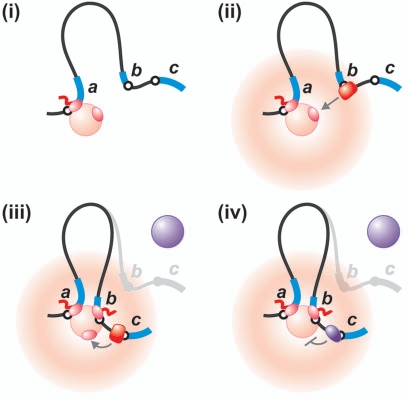Figure 2.
A parsimonious model for transcriptional regulation. (i) Gene a is being transcribed by a polymerase in a factory (pink) and, as a result, genes b and c are tethered close to the factory. (ii) Intuition suggests (and computer simulations support; see ref. 7) the idea that genes tethered close to the pink factory are more likely to be transcribed (i.e., those in the “hot” halo around the pink factory) especially if bound by the “right” TFs (in this case red). (iii) Gene b has attached to the factory and is now being transcribed; this has brought c into the “hot” zone (which makes it more likely to be transcribed). In other words, b acts as an enhancer of c. Another factory (purple) is also shown. (iv) The structure is the same as in (iii) but we are at a different stage during development. Now, different transcription factors have bound to c (purple), enhancing its affinity for a different transcription factory (also purple). Even though c is in the “hot” zone around the pink factory, it remains unlikely to be transcribed there. In this case, b has silenced c by distancing it from its favored (purple) factory.

